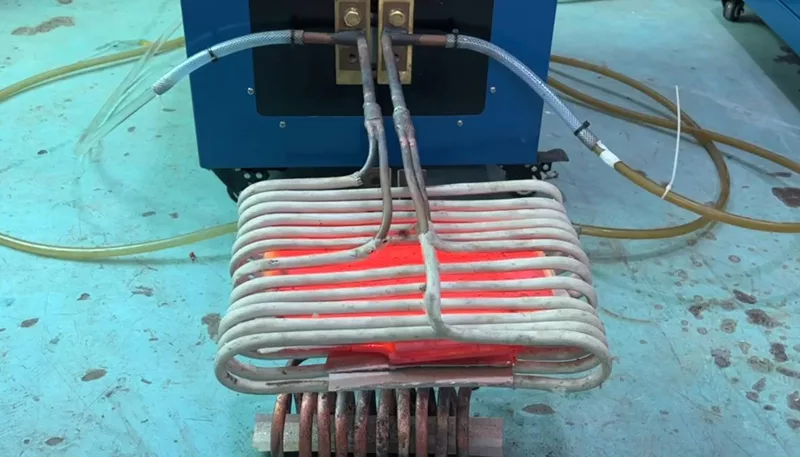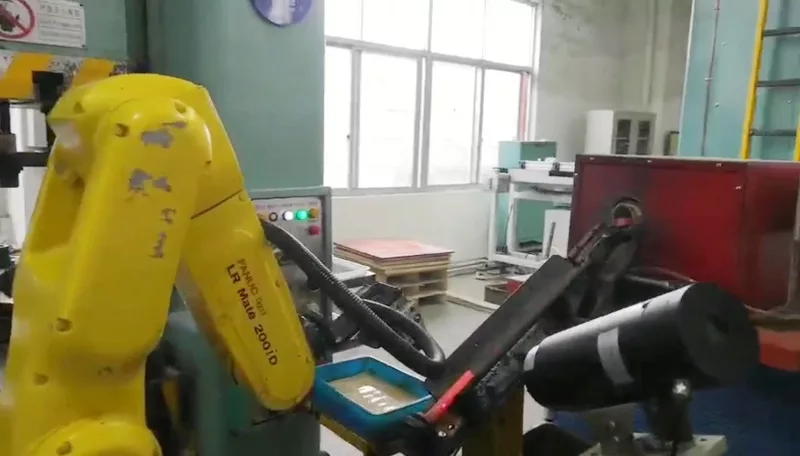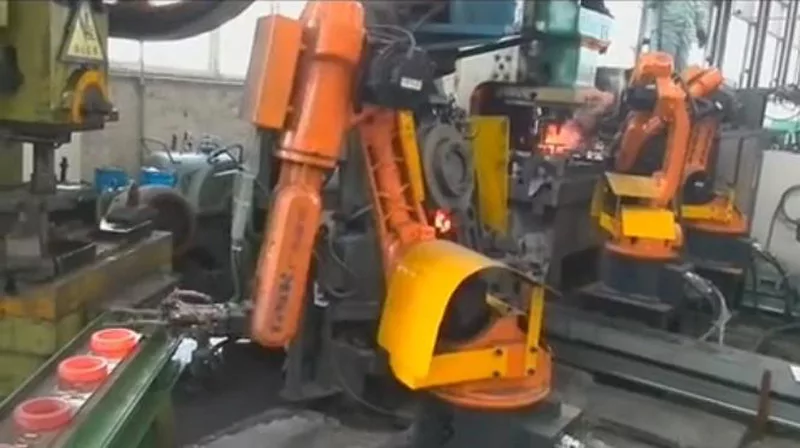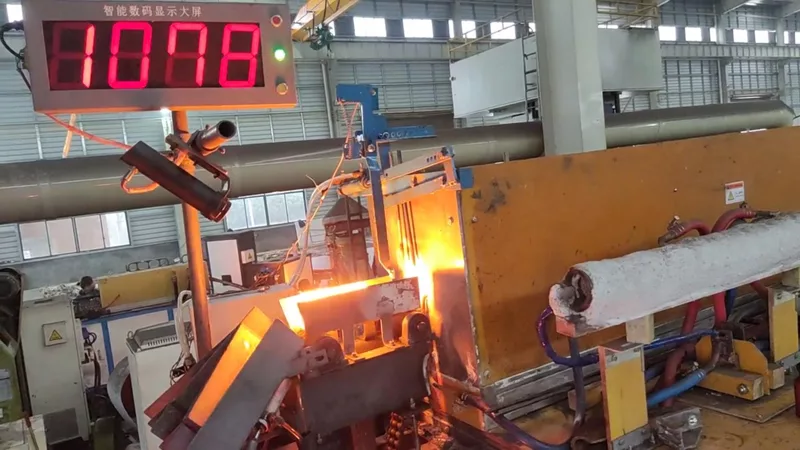What is an induction heating forging machine?
An induction heating forging machine is a device that uses induction heating to preheat metals and shape them into desired forms using a hammer or press. Induction heating is a process that uses electromagnetic induction to heat electrically conductive materials without direct contact. Induction heating for forging has many advantages over furnace forging, such as speed, controllability, energy efficiency, minimal oxidation, and consistent quality. Induction forging machines can handle various types of metals, such as steel, aluminum, copper, brass, and titanium, and different shapes and sizes of billets and bar ends.


Why use the induction heating for the forging process?
There are many reasons to use induction heating for the forging process, such as:
- Rapid heating for improved productivity and higher volumes.
- Precise, even heating of all or only a portion of the part.
- A clean, non-contact method of heating that reduces oxidation and maintains metallurgical integrity.
- Safe and reliable – instant on, instant off heating that eliminates the risk of overheating or melting the surface.
- Cost-effective reduces energy consumption compared to other heating methods like gas furnaces or resistance heating.
- Easy to integrate into production cells with automated or manual loading options.


Some applications of induction forging are:
- Forming metal parts into various shapes and sizes, such as screws, coins, tubes, rods, and bars.
- Hot heading metal wire before shaping it into fasteners or other products.
- Flattening/bending metal tubes for automotive or aerospace components.
- Preheating metal parts before welding or brazing them together.
Induction forging can be used for different types of metals, such as steel, aluminum, copper, brass, and titanium, and can produce consistent quality and precise heating patterns.


How to select the right induction heating forging machine?
- The shape and size of the workpiece are heated. This will affect the coil design and the power density required.
- The depth and area to be heated. This will determine the frequency and power of the induction heating machine. Generally, deeper heating depth, larger area, and overall heating require lower frequency and higher power; shallow heating depth, smaller area, and local heating require higher frequency and lower power.
- The heating speed. This will affect the productivity and energy efficiency of the induction heating process. Faster heating speed requires higher power and lower frequency.
- The induction forging machine continues working time. This will influence the cooling system design and the duty cycle of the induction heating machine.
- The distance between the induction coil and the machine. This will affect the cable length and voltage drop of the induction heating machine.
- The technological requirements. This includes the desired temperature uniformity, profile heating, protective atmosphere, etc., that may have specific implications for the induction heating machine design.
- The workpiece material of induction heating. This will affect the electromagnetic properties and heat capacity of the workpiece, which in turn influence the frequency and power selection of the induction heating machine.
You may also consult with our induction heating experts to help you choose a suitable induction heating forging machine for your application.
Tags:applications of induction heating forging, automatic forging, billet forging, billet forging furnace, copper forging, high frequency forging, induction billet heater for hot forging, induction forging, induction forging equipment, induction forging furnace, induction forging machine, induction heating for forging, induction heating forging, Induction Heating Forging Machine, induction heating forging process, induction heating machine, KETCHAN, KETCHAN Electronic, select induction heating forging machine, steel billet forging machine, steel forging, Zhengzhou KETCHAN, Zhengzhou KETCHAN Electronic
